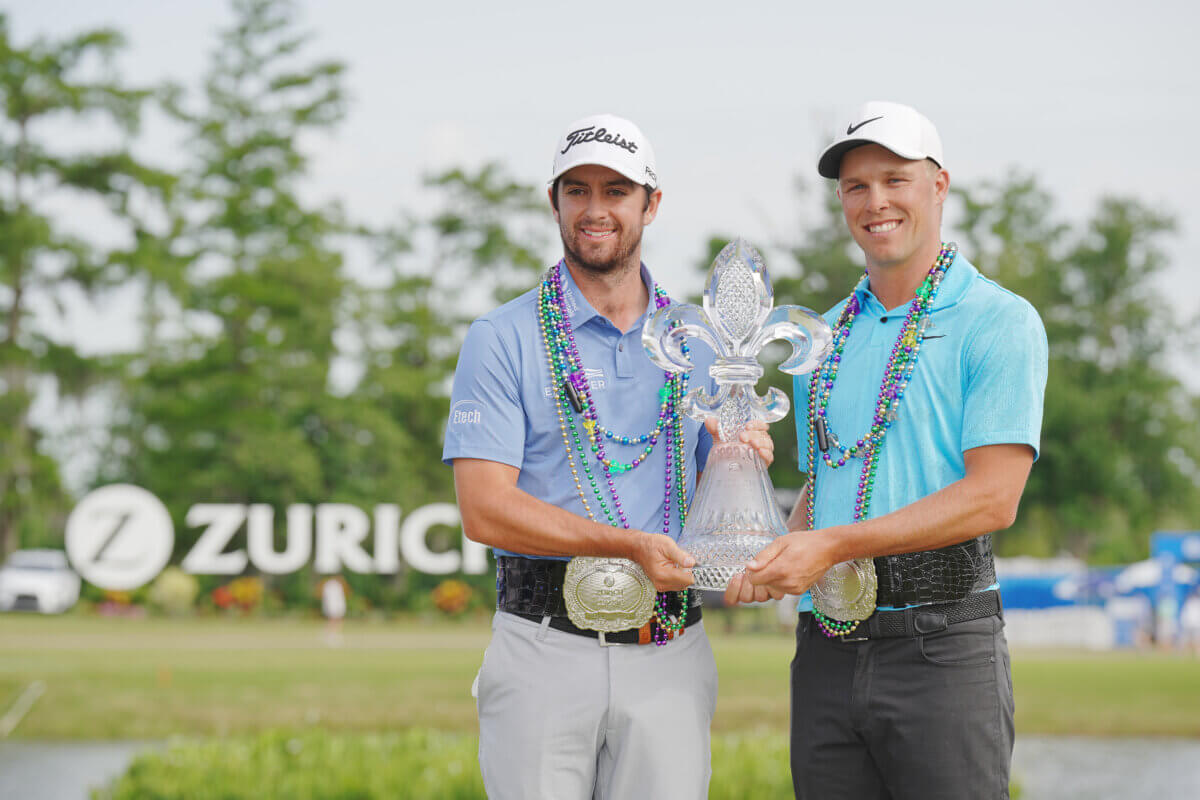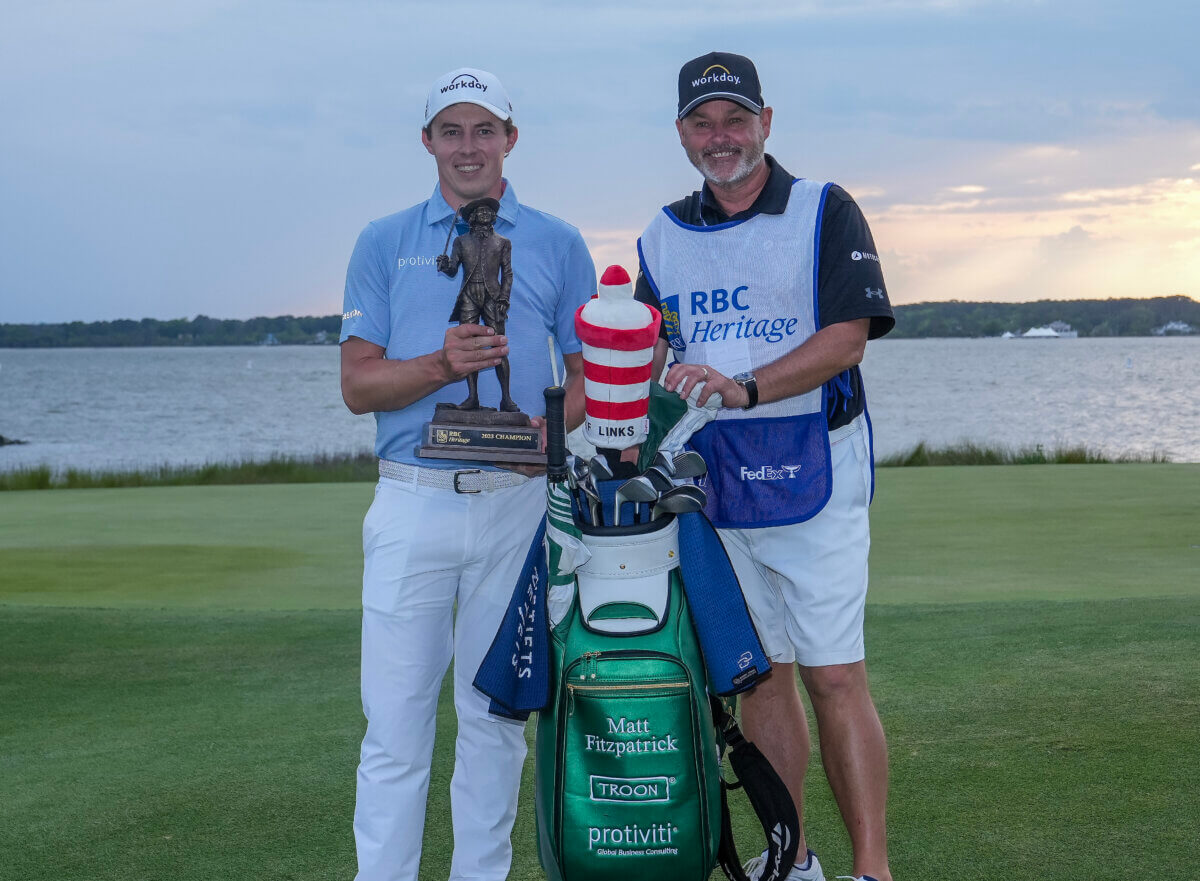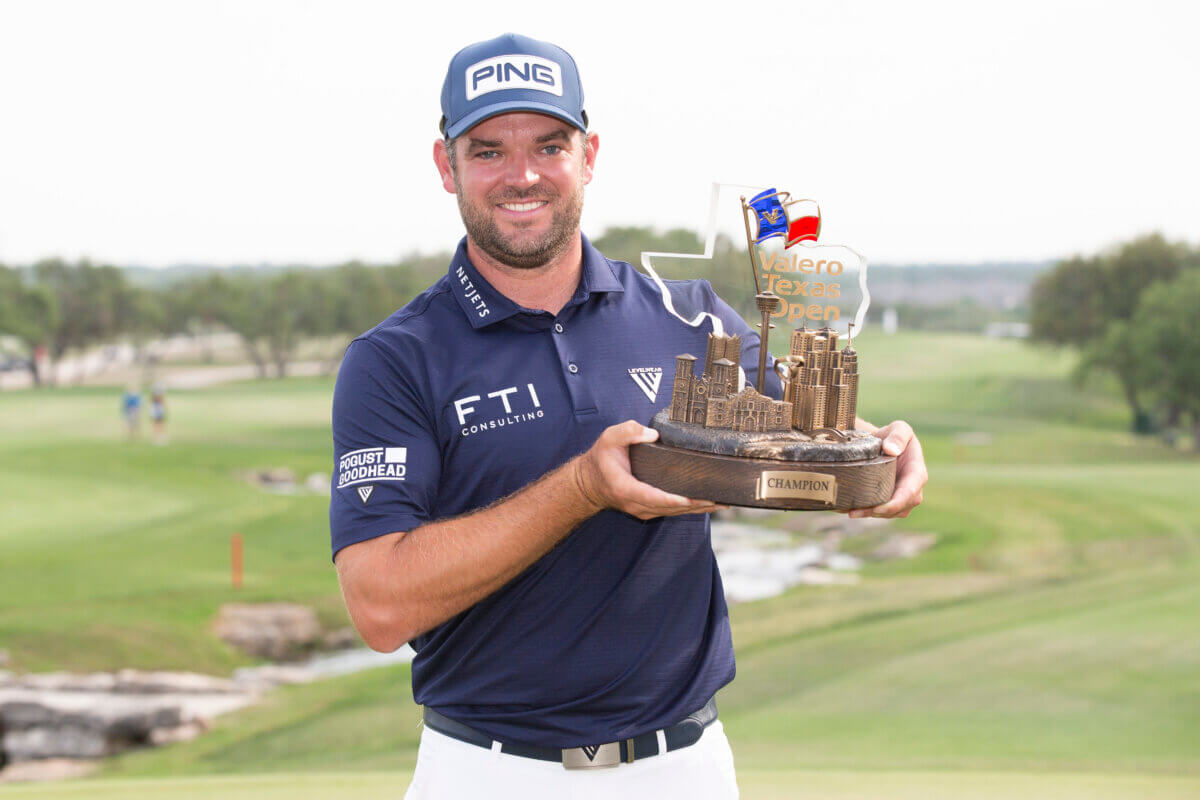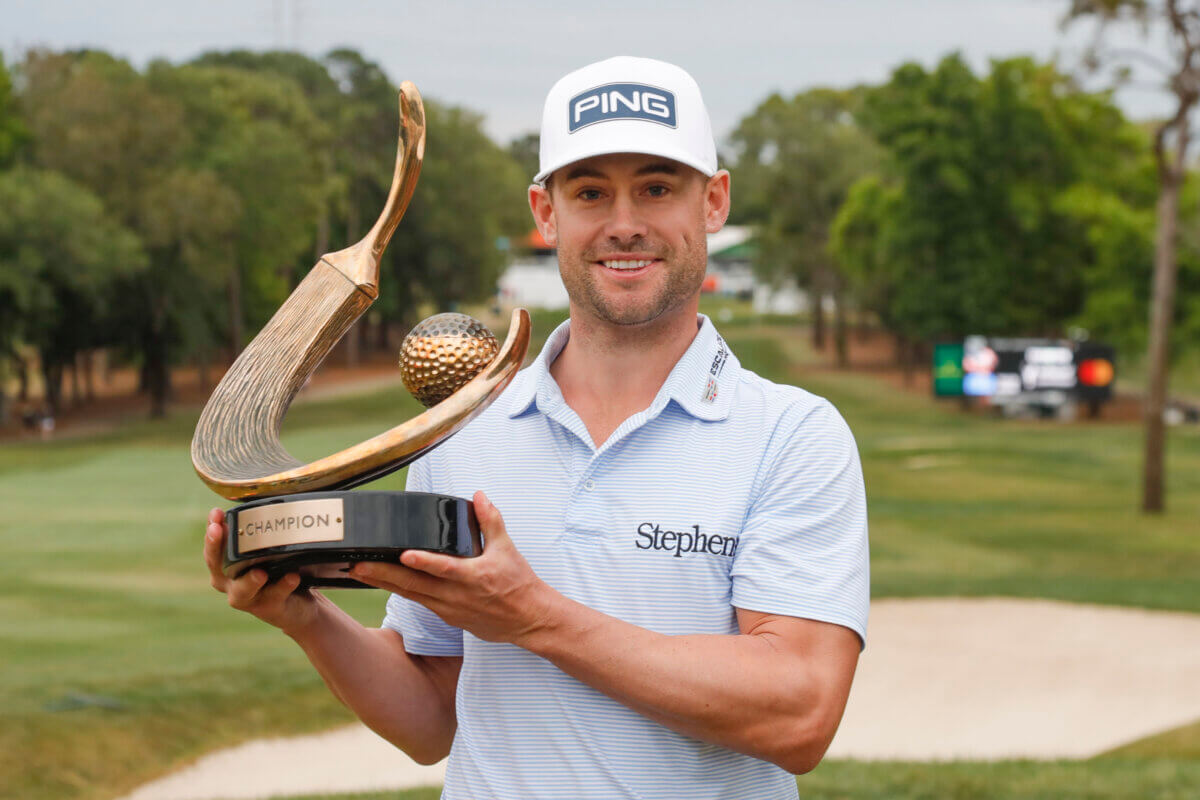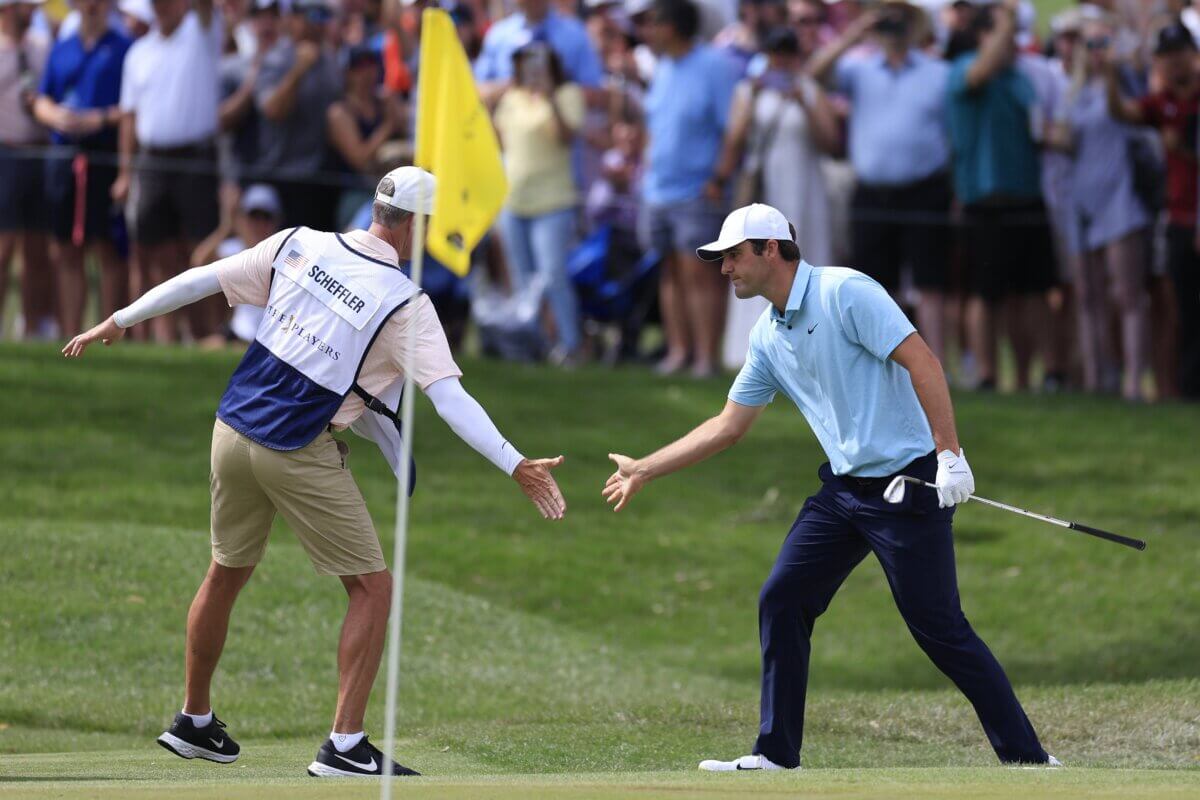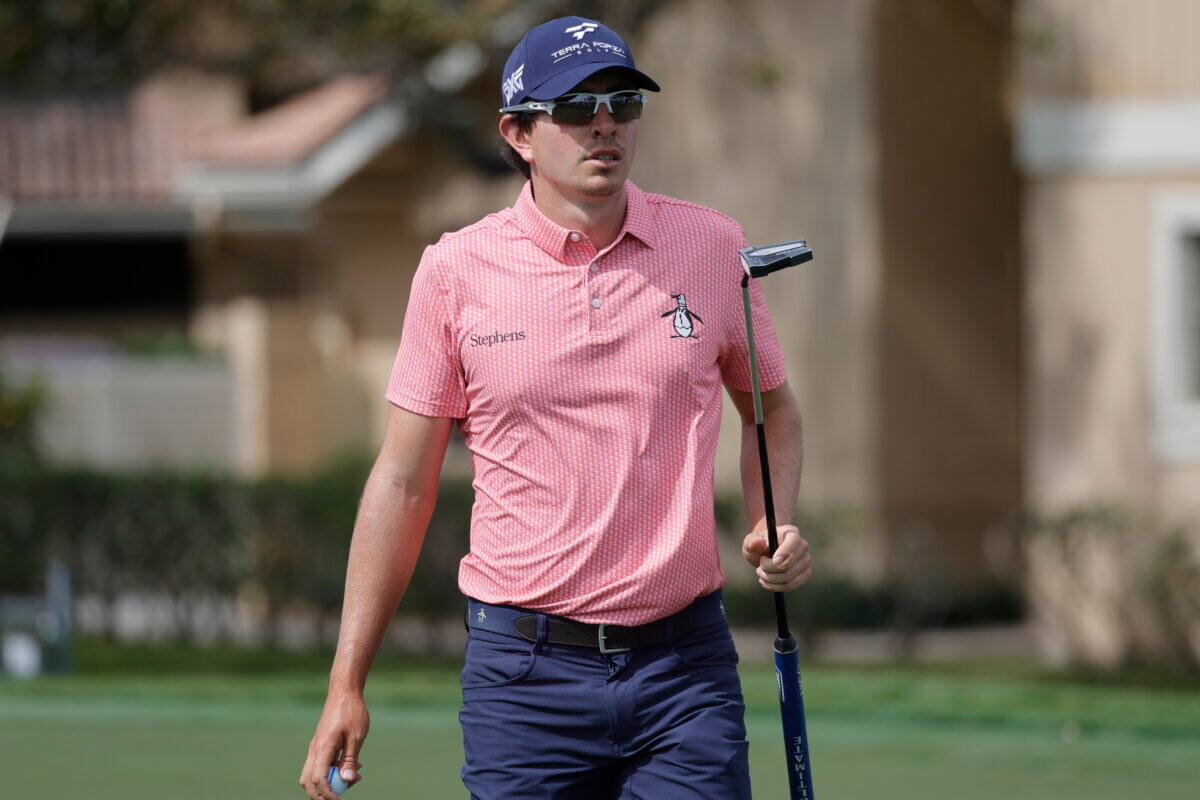Friends, fellow caddies ready to gather for 10th Bruce Edwards ALS Celebrity Golf Classic at Congressional
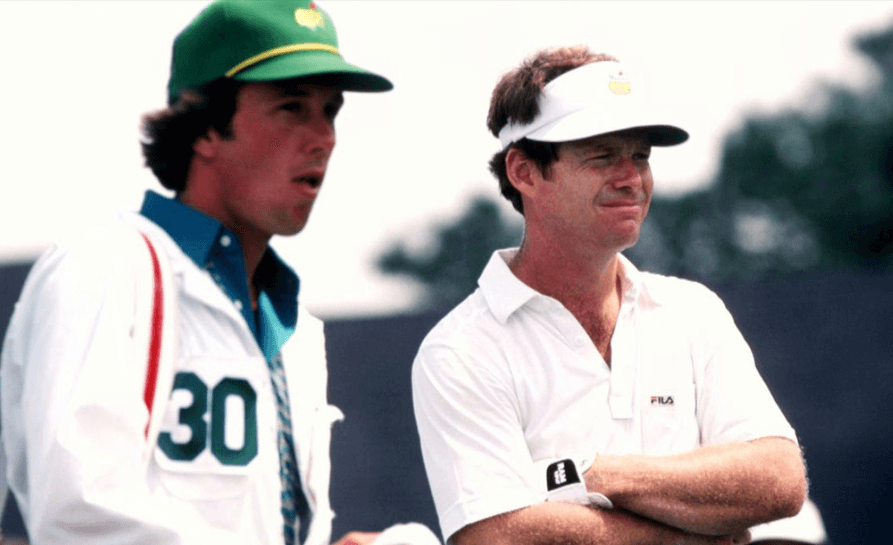
They will gather Monday at Congressional Country Club, just as they have for the last decade, to honor one of their own.
They are not there to cry for longtime caddie Bruce Edwards, as his longtime boss Tom Watson said at his funeral, but to toast to a life cut too short.
It was 15 ½ years ago when Edwards succumbed to ALS – Amyotrophic Lateral Sclerosis – better known as Lou Gehrig’s disease. He was 49.
It seemed appropriate that Edwards died early in the morning of the first round of the 2014 Masters, April 11 to be exact, just a day after receiving the Ben Hogan Award for courage from the Golf Writers Association of America.
READ: Pete Bender hits major milestone: 50 years as a PGA Tour caddie
“It was Bruce’s favorite tournament,” said Watson, who was given the news by his wife just before he teed off. “He picked his time to go.”
A caddie’s life revolves around the clock. Miss a tee time, and you’re usually looking for a new job. Edwards was put on God’s clock after the ALS diagnosis.
Edwards met Watson in 1973 and spent 27 years working for the Hall of Famer. Their first stint lasted until 1989. Edwards worked for Greg Norman for three years before returning to Watson’s bag in 1992 and stayed there until 2003.
It was in early 2003 when Edwards was diagnosed with ALS. He had been ill for a while but, like most caddies at the time, he didn’t have health insurance and didn’t want to see a doctor.
“There were times when Bruce would go for a beer and the bartender wouldn’t serve him,” said veteran caddie Steve Hulka. “Bruce was slurring his words, so the bartender thought he was drunk.”
It was Watson who made Edwards go to a doctor, at the Mayo Clinic, and told them to send him the bill.
Fifteen years later, Watson is still looking out for his friend. The Hall of Famer will be the biggest name at Monday’s 10th Bruce Edwards ALS Celebrity Golf Classic at Congressional.
Shortly after Edwards’ death, Watson teamed up with New York Times bestselling author John Feinstein to create the Bruce Edwards Foundation for ALS Research. Feinstein had just finished his book on Edwards – “Caddie For Life” – a month before Edwards passed.
Through events like Monday’s, more than $10 million has been raised for ALS research at The Robert Packard Center. Ten million!
Just as importantly, the charity event is a way to remember one of the best caddies to walk the PGA Tour fairways and the heroic way he battled the insidious disease.
“One of the things Tom talked about when we started the foundation was, we knew a lot of the momentum we had gotten with battling this disease would be slowed after Bruce died,” Feinstein said Thursday. “That’s only natural. But we didn’t want that to happen. We wanted Bruce’s legacy to live on through his foundation. And Tom wanted to find a cure for ALS.”
In addition to Watson, two-time major champion Andy North is scheduled to be at Congressional, along with many other famous golfers, athletes and celebrities.
A lot of Edwards’ caddie brethren will be there, too. Longtime loopers such as Mike “Fluff” Cowan, Neil Oxman (who also caddied for Watson), Hulka, Linn “Growler” Strickler and other caddies who a lot of casual golf fans wouldn’t know will be there in remembrance of Edwards.
Virtually every veteran on the PGA Tour Champions has been at the event to support Edwards at least once during the last decade. So have legends such as Joe Theismann, Grant Hill, Mike Krzyzewski, Roy Williams and Bob Woodward, who knows a good story.
Like most professional sports, times have changed on the PGA Tour as purses have skyrocketed during the Tiger Woods era. Just as the names of the star players have changed, so have the caddies.
“There’s very few caddies out there who remember who Bruce was,” Hulka said. “That’s how much the landscape has changed in the last 15 years on the PGA Tour. Guys are coming out knowing they have a chance to make $200,000-$300,000 a year carrying a bag.”
Edwards had no such dreams when he started caddying in the early 1970s, fresh out of high school. The Connecticut native had caddied in the Hartford event on the PGA Tour when he was 13, and he was bit by the bug.
That’s all he ever wanted to be was a caddie. Never mind his parents and almost everyone in his family had gone to college; Bruce wasn’t looking for a 9-to-5 job.
Once he met Watson, caddying became his day job. A one-week tryout turned into a three-decades-plus relationship.
Edwards would probably still be caddying for Watson, and others, without the ALS. He would be 64, with another decade ahead of him, and still rooting zealously for all the Philadelphia sports teams (the Eagles sent jerseys of Edwards’ favorite players that his pallbearers wore at his funeral).
When Edwards approached Feinstein about writing the book, it was because he had a story he wanted told. He knew he probably wouldn’t live another year or two.
Few do with ALS.
Feinstein said he was amazed by the courage Edwards showed as the disease took its course, first robbing him of his ability to talk and walk and finally his ability to breathe. ALS is one of the worst ways to die.
“Bruce was dying, he knew he was dying and he knew it would be a painful death,” Feinstein said. “The only time I ever saw him cry was at a family reunion about six months before he died.
“Bruce was crying because he knew how painful his death was going to be for his parents, for his family and for his wife. He never cried for himself. He never said, ‘Why me?’ or ‘this is unfair,’ which of course it absolutely was so unfair.”
Feinstein was hoping Edwards would be able to make it to Augusta, Ga., in 2004 to accept his Ben Hogan Award from the GWAA. Edwards’ wife, Marsha, called a few days beforehand to say Bruce was too ill to attend.
Feinstein, who attended Duke, had listened to plenty of Edwards’ barbs about his favorite college team, the University of Connecticut.
As luck would have it, Connecticut played Duke in the semifinals of the 2004 Final Four. The Huskies rallied from an eight-point deficit with less than three minutes left to defeat Duke, 79-78. (Connecticut would beat Georgia Tech, 82-73, to win the national title).
Feinstein received a text from Edwards after the semifinal game, less than a week before he died.
“I’m not even sure how he sent it,” Feinstein said, “but he said, ‘I feel so bad for Duke because they haven’t had enough success.’
“That was the last text I ever got from him. It was so Bruce.”
To donate to the Bruce Edwards Foundation for ALS Research, please go to www.bruceedwardsfoundation.org.

